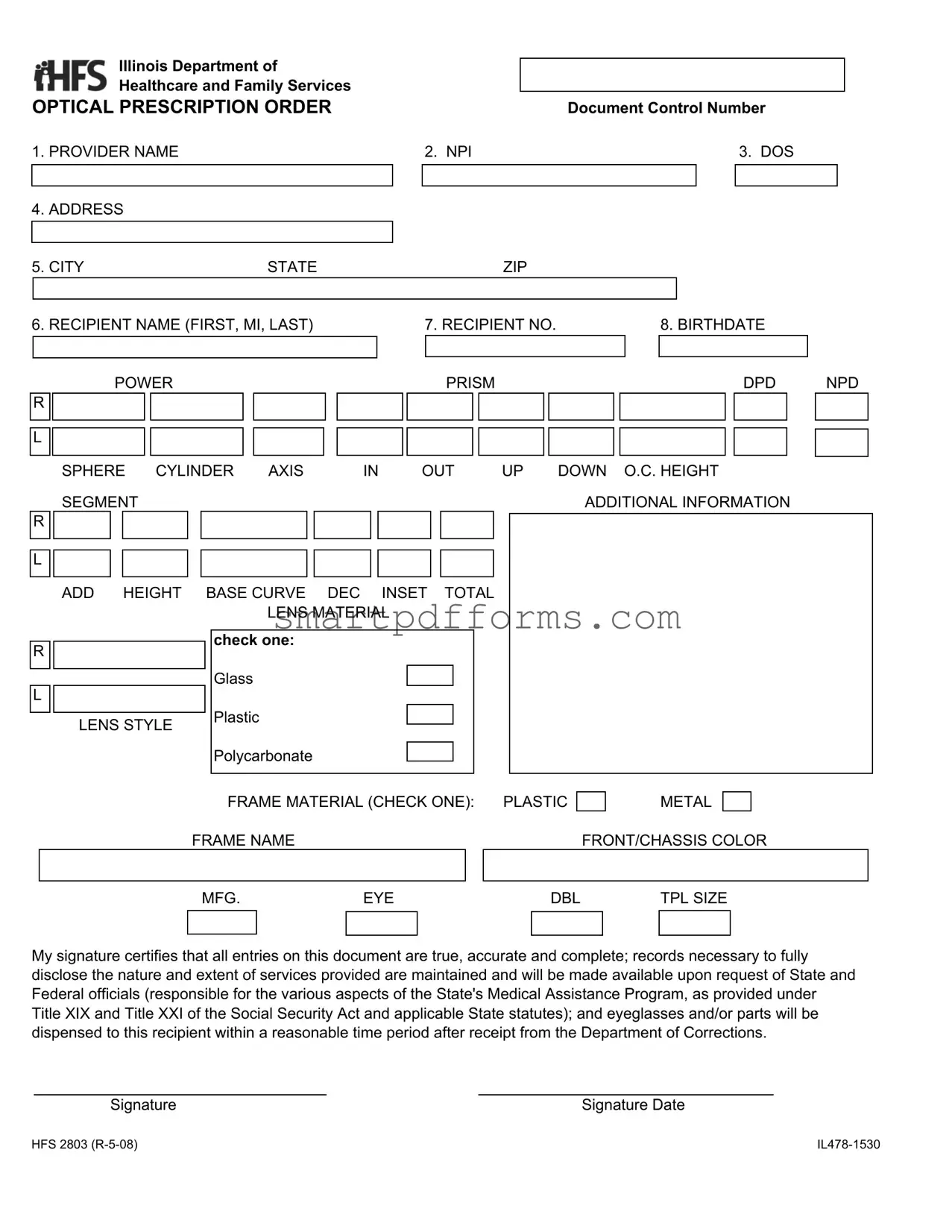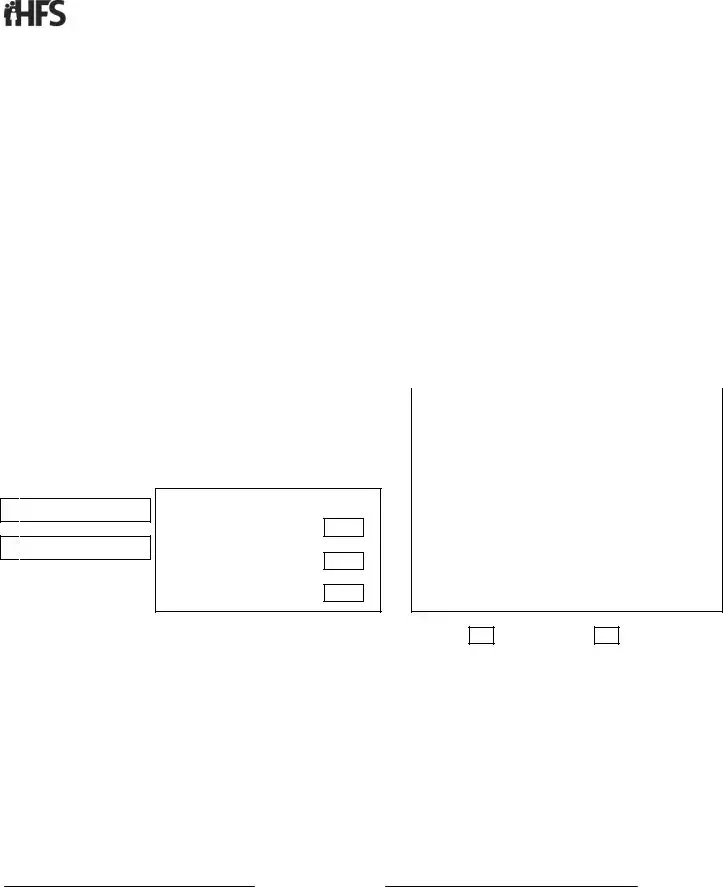In the realm of eye care and corrective lenses, the Contact Lens Prescription form emerges as a crucial document, particularly for residents within Illinois navigating the offerings of the Department of Healthcare and Family Services. This form is meticulously designed to encapsulate a myriad of details essential for the precise crafting and dispensing of contact lenses. It begins with basic but vital provider information, including the name and National Provider Identifier (NPI), extending to the details of the service date and the provider's address, ensuring a clear traceability of the prescription source. The recipient's personal details are not overlooked, with sections dedicated to capturing their name, identification number, and birthdate, which aids in personalizing the health service. The core of the form delves into the technical specifications of the prescribed lenses, breaking down the optical parameters like power, prism, and axis for each eye, which are indispensable for creating lenses that correct vision accurately. Furthermore, it accounts for the material and style preferences, including lens and frame materials, thereby reflecting the individual's needs and lifestyle choices. Such comprehensiveness ensures that every aspect, from optical precision to personal comfort, is covered. The concluding segment of the form emphasizes the accountability and integrity of the process, requiring signatures to certify the accuracy of the information provided and affirming the provider's commitment to align with legal and ethical standards. This document, in essence, serves not just as a prescription but as a bridge connecting patients to personalized corrective eyewear, underpined by a framework that upholds both medical accuracy and personal choice.





